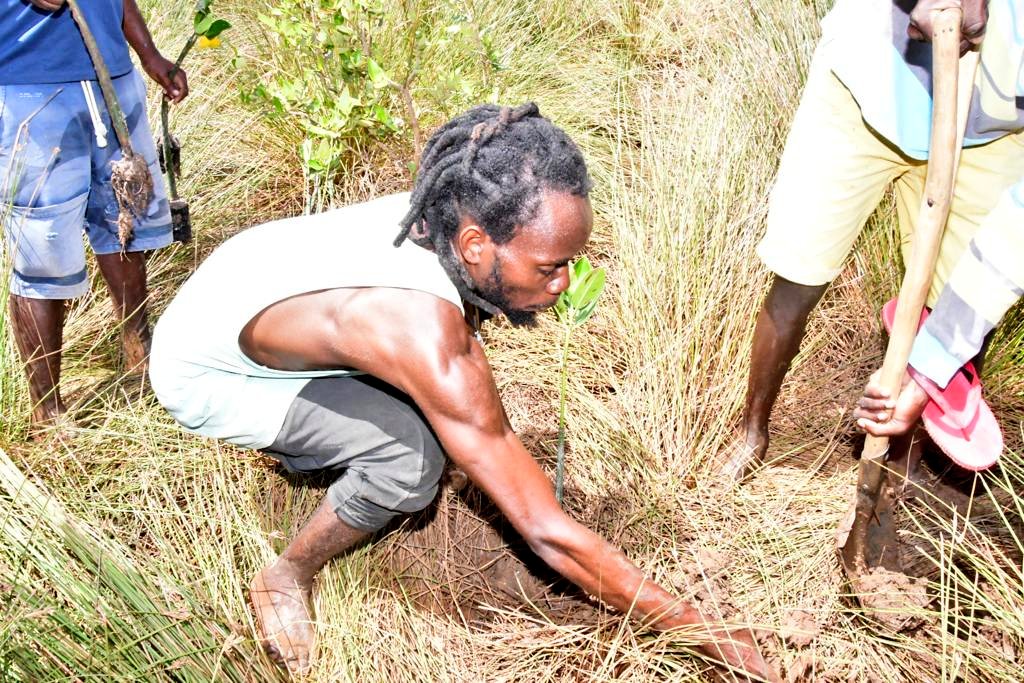

Located in northern Kenya, the wetlands are fed by the Athi-Galana-Sabaki River, which begins its course at Ondiri Swamp and makes its way to the Indian Ocean. The Sabaki Estuary is an area of wetlands covering around 200 ha. On World Wetlands Day in 2021, the Kenyan Cabinet Secretary for Environment and Forestry showed support for this important cause, launching the Integrated Coastal Zone Management Action Plan, 2019-2023 at the River Sabaki estuary in Kilifi County. The estuary marks the point where the Ocean water mix with the reddish river water, showcasing a clear distinction of the two. The Kenya Forest Research Institute (KEFRI) has been supporting the monitoring and protection of wetlands in the country especially the Ondiri wetland, taking part in World Wetlands Day to celebrate the six Ramsar sites across Kenya, and campaigning for more sites to be appointed. Sabaki Estuary, the Athi-Galana-Sabaki River entry into the Indian Ocean is marvelous scenery dotted with thousands of flamingos, hippos, crocodiles and several bird species as listed by the Important Bird Area (IBA). Wetlands, including river deltas, peatlands and mangroves are a crucial part of the Kenyan landscape and biodiversity. Despite their important status, wetlands are being destroyed at a rapid rate - 87% of the world’s wetlands have been destroyed over the past 300 years. In fact, mangroves have been shown to be more efficient at sequestering carbon than temporal or boreal forests. Immensely efficient at capturing and storing carbon, it is thought that 35% of the world’s carbon is contained within wetlands. The coded algorithm determined TSS concentration from Global MSG images, which were validated along the Kenyan Coast (Sabaki River Estuary). Wetlands are also key to the global fight against climate change. For generations, villagers living near the Sabaki estuary had relied on its natural bounty for lumber and firewood, fresh water, seafood, farming land, and plants for traditional medicine. The dense vegetation protects our shores from erosion, provides a buffer against rising water and serves as a habitat for a vast range of fish, birds, reptiles and mammals. They may look chaotic, but the tidal pools, marshes and tangles of mangroves, branches and roots are actually key to preserving order in the world around us. One of the world’s most delicate ecosystems, wetlands are a crucial part of our natural environment.

Most of the visitors who throng this place have a very wonderful time. The number of these birds keep on changing due to its proximity to other Important Bird Areas (IBA) in the neighbourhood like the Arabuko-Sokoke and Mida Creek, Dakatcha Woodlands and Tana River Delta.Īlso Read: The thrills and whispers of River Rare in Ganze Mud flats are a vital habitat for migratory waders, gulls and terns, and theĬoastal scrub and wetlands adjacent to the river mouth are an important habitįor shorebirds and other water birds. It hosts a number of rare beautiful birds.

Sabaki River Mouth is listed as an Important Bird Area (IBA)īy Birdlife International. North of the estuary are sand dumes and Mambrui villageĬould be seen from here with its makuti thatched Swahili houses. The River is also infested with crocodiles.Īlso Read: Hell’s Kitchen: The beauty in the woodlands When lucky, you may see large hippopotamus basking in the sun on the river banks. It is scenery that leaves most visitors asking to be back the next time they visit the area. It is very interesting during high tides when sea water tends to rush out and clash with the reddish in coming river water. It is at this point where sea water mix with the river water. This is where visitors witness water fighting. The hidden destination only frequented by a few birdwatchers marks where a river pours its water into an ocean yet the sea has rejected the water for years. From the main road to the charismatic, unique estuary is about one kilometer. River Sabaki cuts the Malindi-Lamu main road at a place near the Marafa junction.


 0 kommentar(er)
0 kommentar(er)
